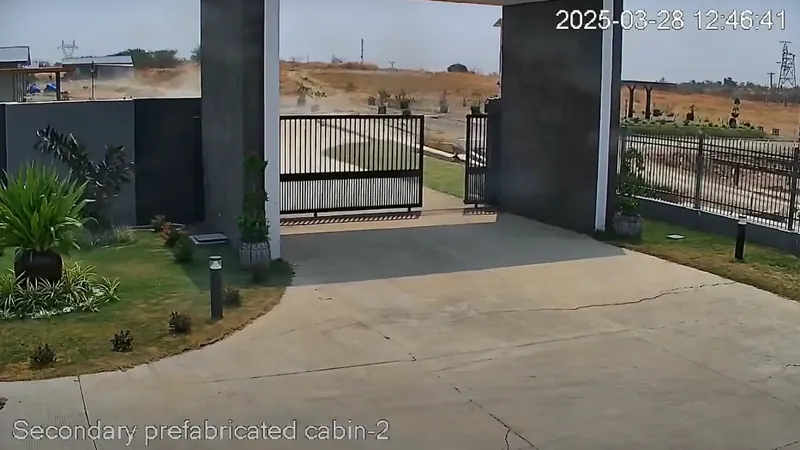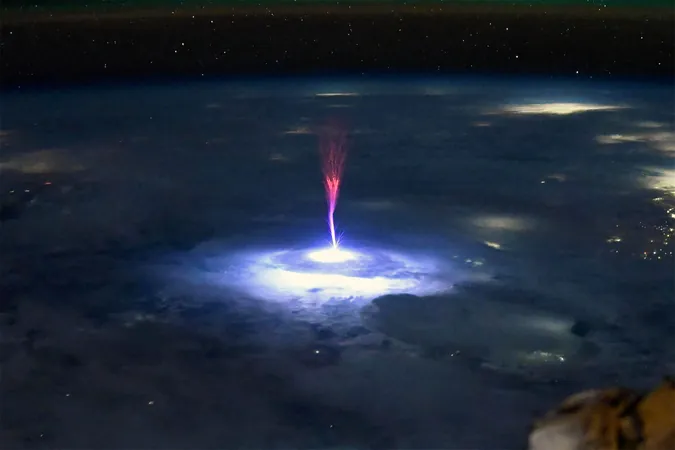
Shocking Video Reveals Earthquake Faults in Motion—You Won't Believe What They Found!
2025-07-18
Author: Jia
A groundbreaking video has captured the astonishing spectacle of ground cracking during a massive earthquake, bringing to light surprising dynamics never seen before. This remarkable footage not only showcases a unique type of ground movement but also reveals an unexpected curved path of the crack.
This curvy displacement, previously inferred from geological records and markings known as 'slickenlines'—the scratches left on fault surfaces—had never been directly witnessed. "Instead of moving straight across the screen, the crack followed a curved trajectory that bent downward, triggering a rush of excitement for me," noted geophysicist Jesse Kearse from Kyoto University, emphasizing his previous research into fault slip curvature.
The extraordinary footage was recorded by a security camera in Thazi, Myanmar, capturing the intense moments of a magnitude 7.7 earthquake on March 28. It shows the ground trembling violently before a significant crack emerges. Although such ruptures are common during powerful quakes, catching them on video is a rare feat.
Kearse described his initial viewing of the video as spine-chilling. It wasn't until his fifth or sixth time watching that he spotted the crack's curvature. Intrigued, he and his colleague, Yoshihiro Kaneko, conducted a closer analysis and discovered that the crack initially curves sharply, then accelerates to an astonishing peak speed of 10.5 feet per second (3.2 meters per second), moving a total of 8.2 feet (2.5 meters) in just 1.3 seconds.
Their findings indicate that this curvature occurs because the stress levels on the fault's surface are lower compared to those deeper underground, resulting in a complex movement pattern. "This curvature holds vital clues about the dynamics of the rupture," Kearse explained in his YouTube video commentary.
Interestingly, the varying stresses exerted at the surface alter the fault's path temporarily, leading it to realign before resuming its designated course. Understanding these curves could provide insights not only into the mechanisms behind past earthquakes but also aid in predicting future seismic activities.
The implications of these findings are monumental, potentially reshaping our understanding of earthquake behavior and contributing to enhanced safety measures in earthquake-prone areas.




 Brasil (PT)
Brasil (PT)
 Canada (EN)
Canada (EN)
 Chile (ES)
Chile (ES)
 Česko (CS)
Česko (CS)
 대한민국 (KO)
대한민국 (KO)
 España (ES)
España (ES)
 France (FR)
France (FR)
 Hong Kong (EN)
Hong Kong (EN)
 Italia (IT)
Italia (IT)
 日本 (JA)
日本 (JA)
 Magyarország (HU)
Magyarország (HU)
 Norge (NO)
Norge (NO)
 Polska (PL)
Polska (PL)
 Schweiz (DE)
Schweiz (DE)
 Singapore (EN)
Singapore (EN)
 Sverige (SV)
Sverige (SV)
 Suomi (FI)
Suomi (FI)
 Türkiye (TR)
Türkiye (TR)
 الإمارات العربية المتحدة (AR)
الإمارات العربية المتحدة (AR)